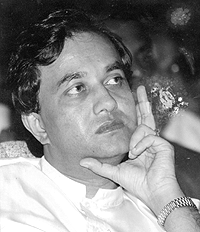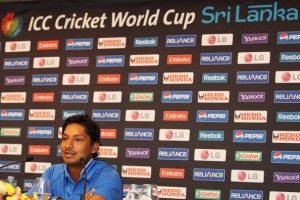The Sri Lankans are here, promising to bring much pleasure to the start of the cricketing summer, but even their best batsmen should gladly concede that the greatest innings ever played by a Sri Lankan took place in the committee rooms at Lord’s almost 30 years ago.
Gamini Dissanayake (educated at Trinity College, Kandy) made a charismatic case for Sri Lanka cricket on that day in June 1981, winning over the fustiest of cricket administrators with an eloquent plea for them to be granted Test status. This was the most judicious of knocks, as he played himself in with diplomatic references to spreading cricket’s values of honesty and fair play before sallying forth with a host of guarantees that he would personally bring Sri Lanka’s facilities up to scratch.
As Ireland, and other associate nations, prepare to press their case at the International Cricket Council’s annual meeting in Hong Kong next month for the right for a qualifying tournament in the 2015 World Cup, they could do worse than challenge the closed, commercially obsessed minds of the ICC by reminding them that without Dissanayake’s impassioned speech the likes of De Silva, Ranatunga, Murali, and those two fine upstanding captains of old, Jayawardene and Sangakkara, might never have had the opportunity to bring so much joy to the cricketing world.
What a delight it must be therefore for Kumar Sangakkara (also educated at Trinity College, Kandy) to be awarded the chance to revisit the scene of Dissanayake’s triumph on this 30th anniversary of one of the greatest Sri Lankan speeches. The MCC announced Sangakkara as the speaker for its annual Spirit of Cricket Cowdrey Lecture, the youngest speaker ever, but one blessed with a razor-sharp intellect and an integrity that, along with his close confidant Jayawardene, has guided Sri Lankan cricket through the political morass that dogs its every turn.
The civil war has ended, but the reverberations remain. Sangakkara is adamant, with good cause, that Sri Lankan cricket has glued the nation together in difficult times. There have been other tragedies, too. He should find room to talk of Murali, one of cricket’s great champions, and how after the horrific Boxing Day tsunami he made countless phone calls to borrow lorries and transport aid to the east, and also to argue vehemently with a jumped-up local politician or two when he suspected that the aid was not getting to where it was most sorely needed.
Dissanayake, president of the Sri Lanka board, was a politician that Britain could do business with. Most people assumed that the huge Mahaweli Dam project would take a lifetime, but with Dissanayake it was done in six years. He was campaigning as leader of the opposition, for the United National Party in the 1994 elections, when he was assassinated by an LTTE (Liberation Tigers of Tamil Eelam) suicide bomber at Thotalanga. He did not live to see the tubbiest streetfighter of them all, Arjuna Ranatunga, lift the World Cup two years later, the event that pronounced Sri Lanka had truly arrived.
Sri Lanka’s tour manager in England, Anura Tennekoon, had his cricketing time before Test status was granted. Tennekoon was born in the City of Kings, Anuradhapura, and became a boarder at St Thomas’ College, one of Colombo’s most renowned private schools, at an early age. When Thomians gather, they still talk respectfully of Tennekoon’s unofficial Test runs, nearly 2,000 of them at an average of nearly 50.
Unofficial Test runs may be a discredited and obsolete currency, the drachma of the cricket circuit, but it is not long in Colombo’s more erudite and elderly cricketing circles before talk turns to how Tennekoon was sent off as a St Thomas’ schoolboy to make up the numbers for the national side when Ted Dexter’s England side docked in the mid-1960s, or of how he once swept the Indian off-spinner Venkat three successive times into the ivy-strewn scoreboard at the SSC.  Tennekoon was captain of Sri Lanka when they made their debut in the 1975 World Cup. It was a fierce baptism. In their first match at Old Trafford they were bowled out for 86 by the West Indies. Tennekoon made a duck, no sign there of the “princely elegance” for which he was praised in Colombo.
Tennekoon was captain of Sri Lanka when they made their debut in the 1975 World Cup. It was a fierce baptism. In their first match at Old Trafford they were bowled out for 86 by the West Indies. Tennekoon made a duck, no sign there of the “princely elegance” for which he was praised in Colombo.
Next up was Australia at The Oval. Australia made 328 for five before the fearsome new-ball partnership of Dennis Lillee and Jeff Thomson exacted terrible punishment. Tennekoon made 48, but Sunil Wettimuny and Duleep Mendis retired hurt and when Ranjit Fernando had so many ice packs applied on bruises that he enquired if it would be easier if he just got into a fridge.
Sri Lanka reached 276 for four, a recovery that commanded respect, but all that disappeared when they lost their final match to Pakistan by 192 runs. They returned to Colombo crestfallen, unable to imagine then that barely 20 years later they would be crowned World Cup champions.
Written by David Hopps from the guardian.co.uk
Related Posts:
Published 13 years ago






